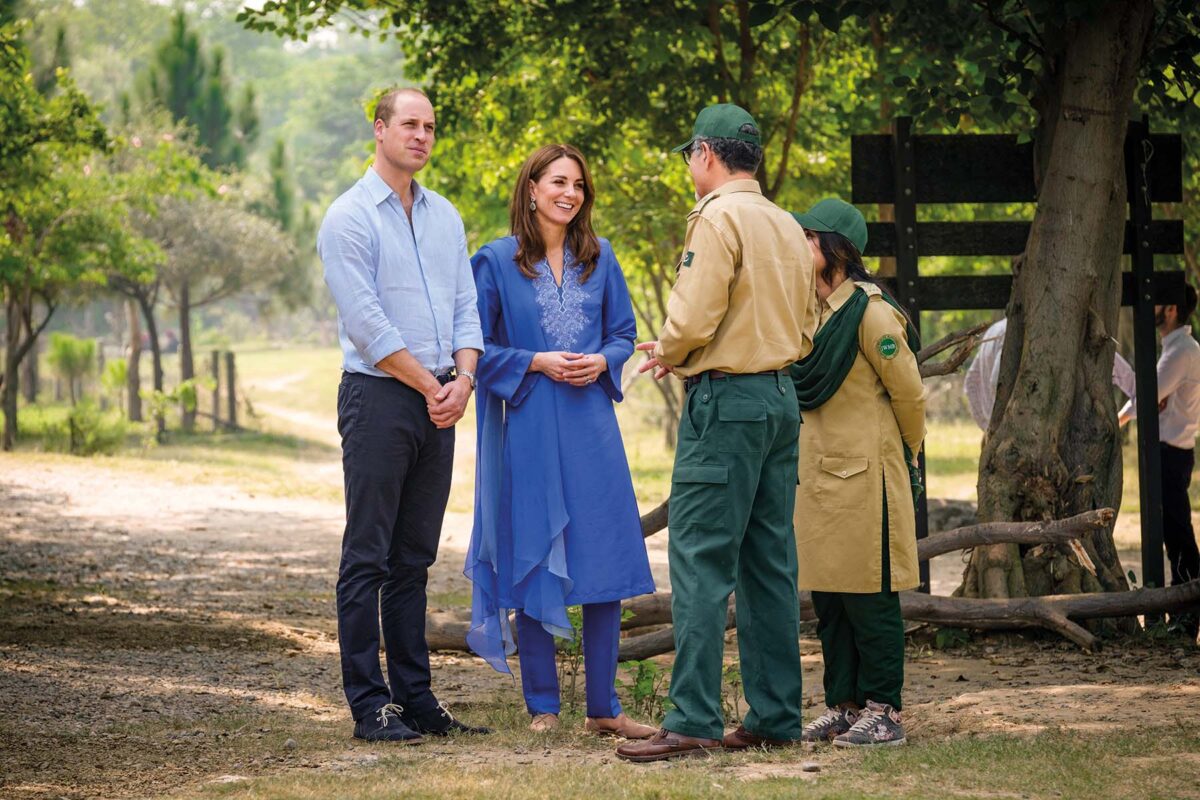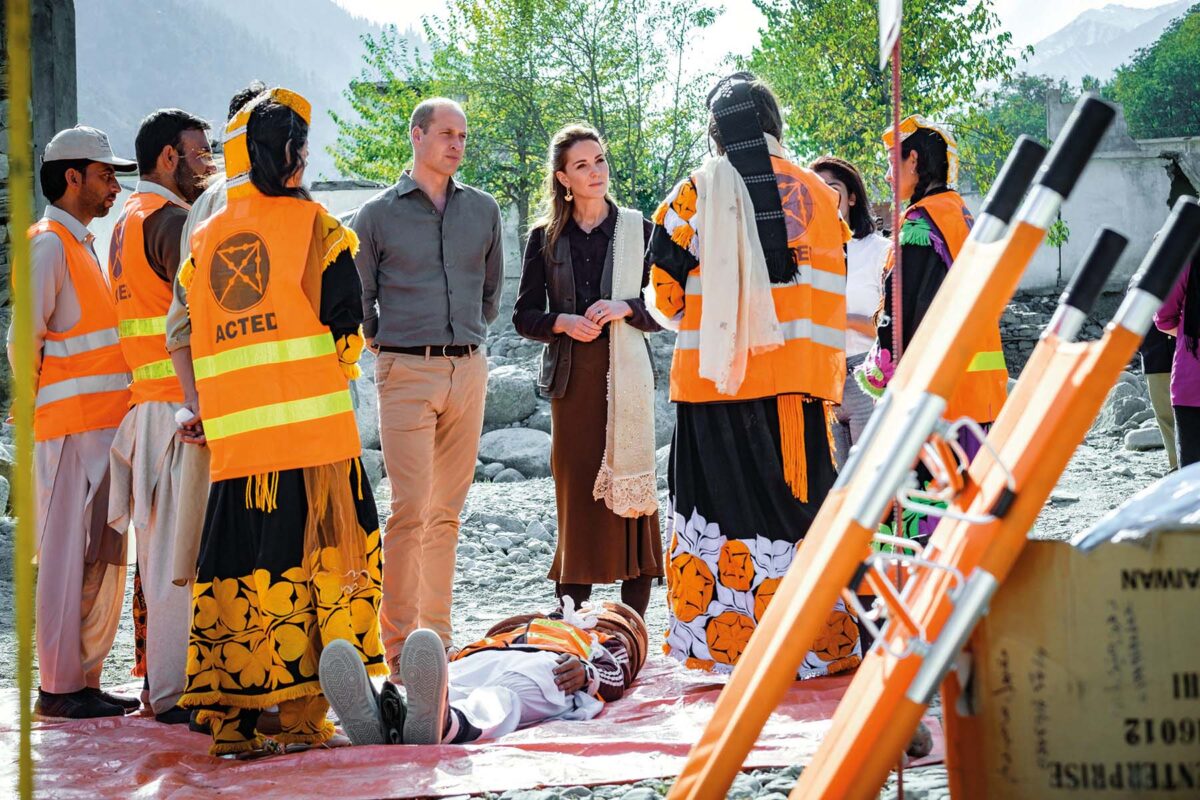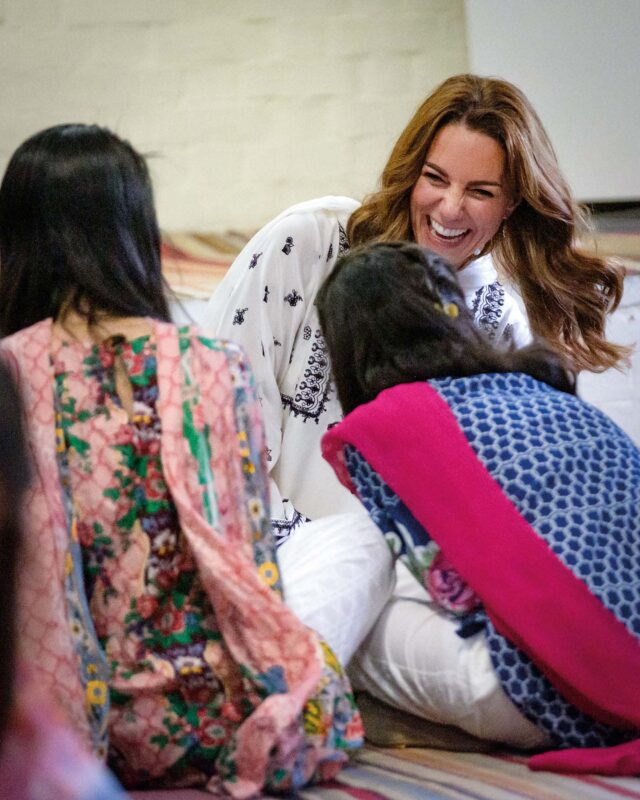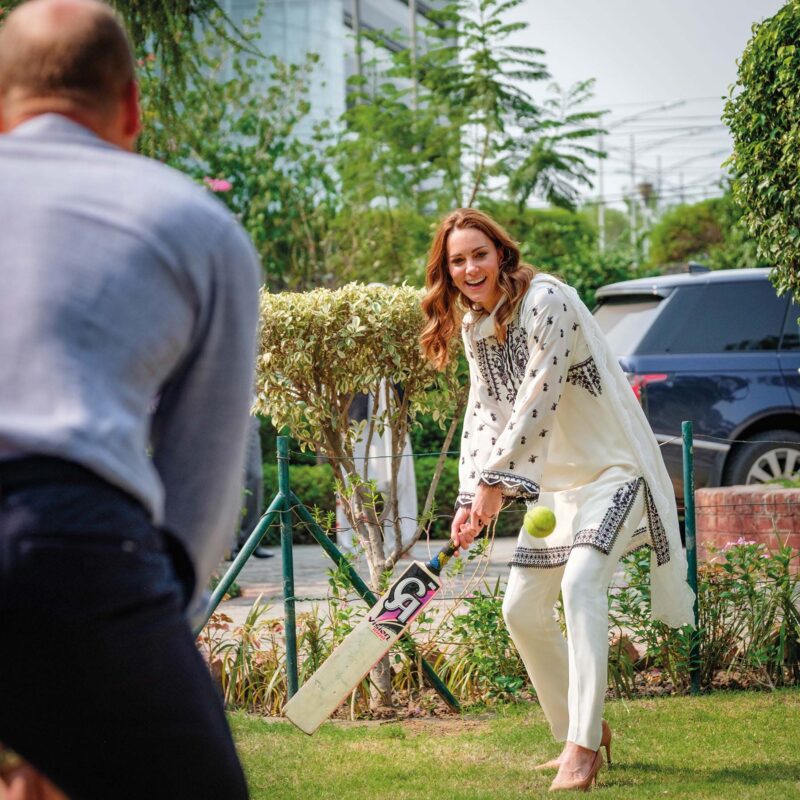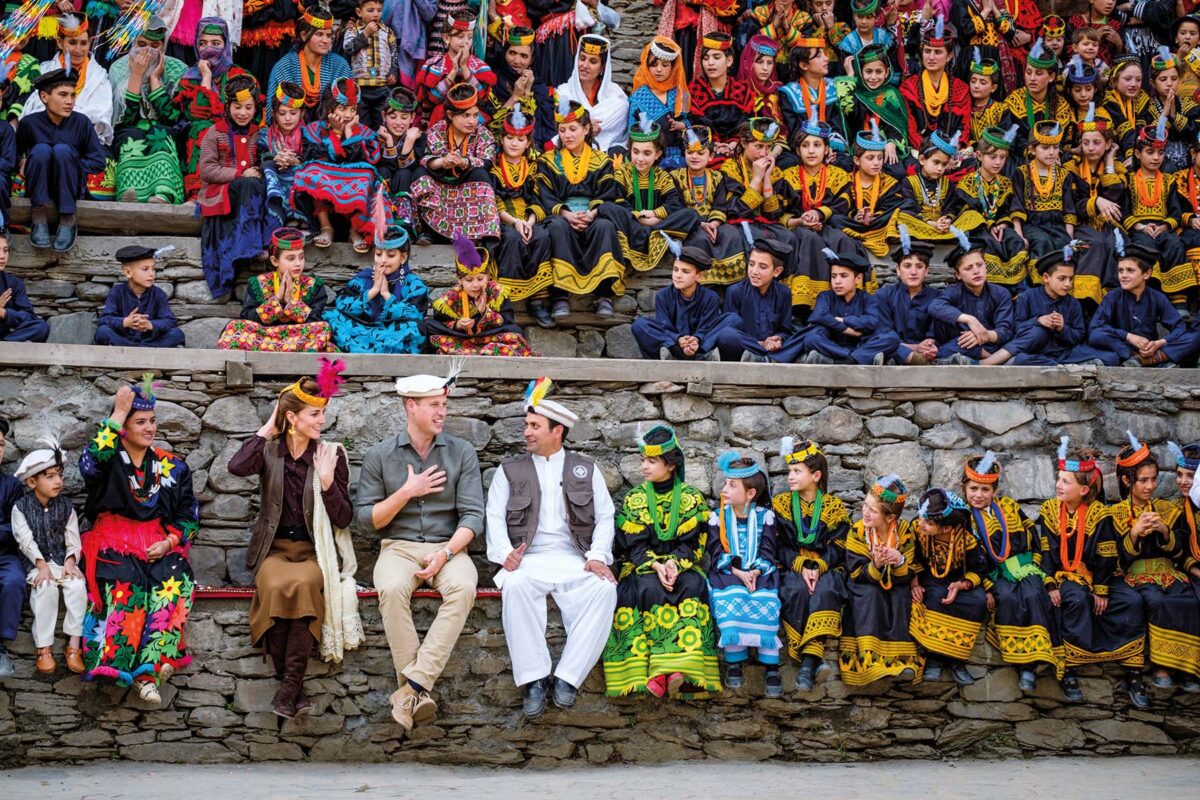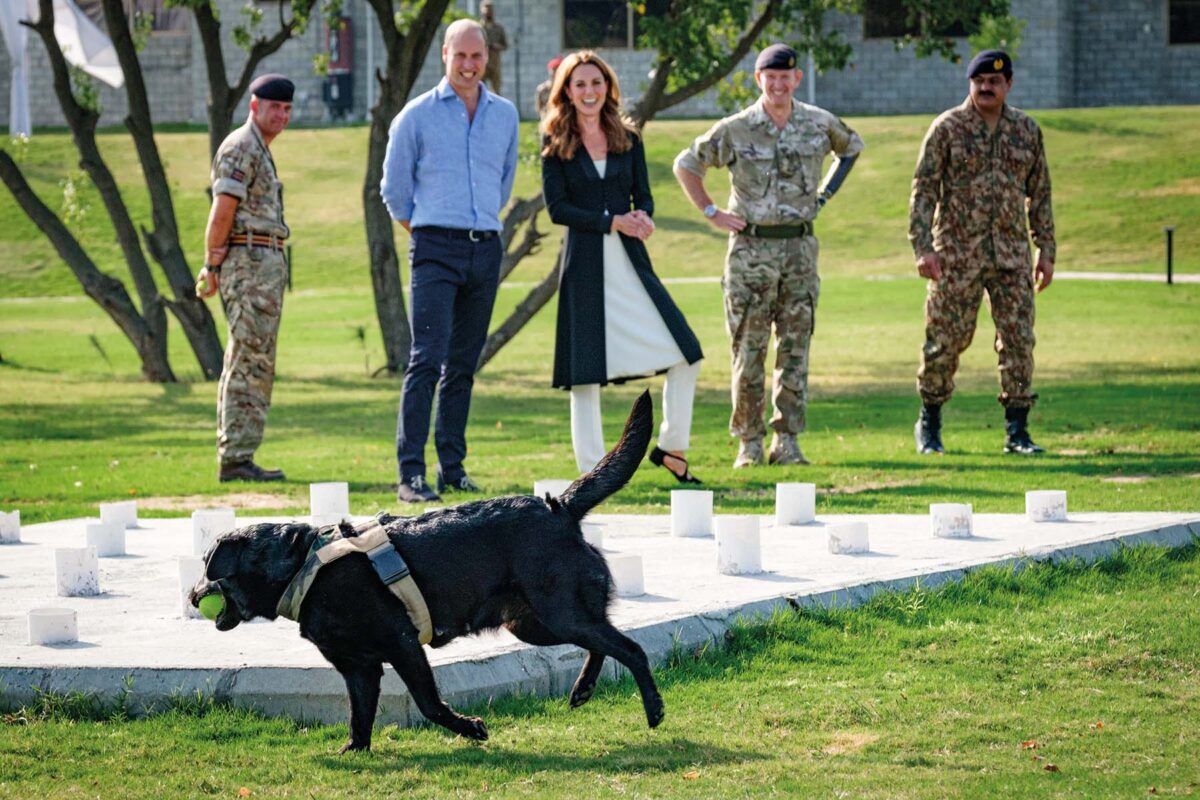On the royal trail and part of an exclusive audience in attendance at the interfaith dialogue organized for the Duke and Duchess of Cambridge within the age-old Badshahi Mosque in old-town Lahore, journalist Yusra Askari tells us all about the causes the royal couple championed and in turn the issues they highlighted while on their maiden visit to Pakistan.
Photos Courtesy: Kensington Palace
The hype for their much-anticipated trip began when an early fall afternoon saw the young royals make a very well-received outing at the Aga Khan Centre in London two weeks ahead of their scheduled arrival in Pakistan. Later as the RAF Voyager touched down at Nur Khan Airbase, the Duke and Duchess of Cambridge became the third generation of the British Royal Family to visit Pakistan in its 72-year history. The first Windsors to tour since the Prince of Wales and Duchess of Cornwall’s trip over a decade ago in 2006, Prince William and Catherine Middleton travelled to Pakistan between the 14th and the 18th of October on request of the Foreign and Commonwealth Office.
The royal couple’s travels in Pakistan spanned 4 days and over 1000 km. Introducing the Cambridges to the country’s rich culture, its diverse communities, and beautiful landscapes, the visit took the couple from the modern leafy capital of Islamabad, to the vibrant city of Lahore, and onward to the mountainous countryside in the North, and the rugged border regions to the West. While designed to honour the historical relationship between Britain and Pakistan, the schedule for the Duke and Duchess’s visit was largely focused on the Pakistan of today – ‘a dynamic, aspirational and forward-looking nation.’
It was dubbed ‘the most complex tour undertaken by the Duke and Duchess to date, given the logistical and security considerations.’ In a bid to realize and recognise the untapped potential of Pakistan, the Duke and Duchess were keen to meet with as many Pakistanis as possible. Over the course of their visit, they engaged with a variety of people, including children and young people, government officials, faith leaders, specialists in the business and the charity sector, inspiring conservationists, and well-known cultural figures and sporting stars, among a host of others. Here’s mapping the royal couple’s visit to Pakistan with an overview of the causes the Duke and Duchess of Cambridge championed on their tour.
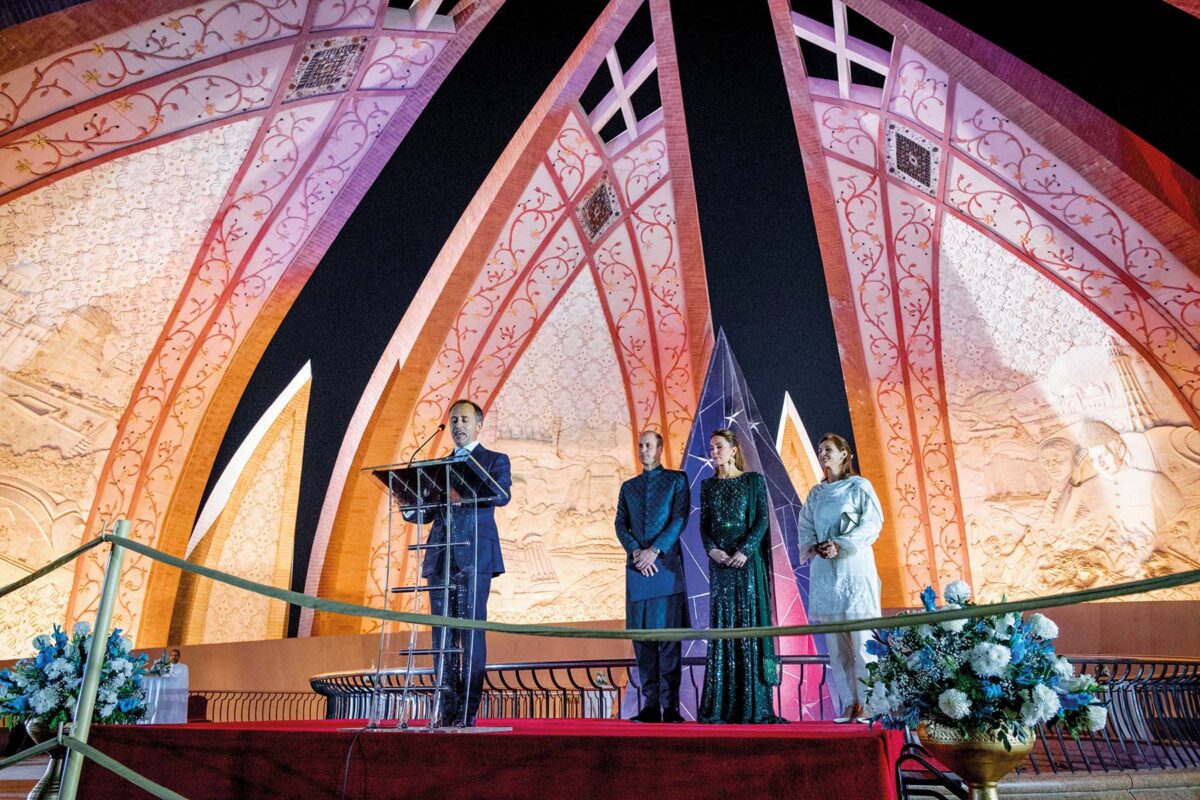
EDUCATION
The Duke and Duchess of Cambridge began their tour of Pakistan with focus on education, a cause very close to their heart. Their Royal Highnesses Prince William and Kate Middleton commenced the first day of engagements with a visit to the government-run Islamabad Model College for Girls to champion the importance of quality education for all, particularly for girls and young women. The royal couple met and interacted with pupils from kindergarten to sixth-form aged between 4 and 18 years, and heard about how they had benefited from ‘Teach for Pakistan’ – a fast-track teacher training programme modelled on the UK’s successful ‘Teach First’ scheme.
SUSTAINABLE DEVELOPMENT GOALS
The Duke and Duchess of Cambridge visited the Margalla Hills National Park, a 175 square kilometre expanse that includes the Margalla Hills, Rawal Dam and Shakarparain. The royal couple took part in a number of activities that highlighted Pakistan’s work to meet Sustainable Development Goals. The Cambridges joined students from four local schools to set up a camera trap along the track of Trail 5 of the glorious Margalla Hills that face threats of encroachment, poaching, wildfires, invasive species as well as littering.
Anis-ur-Rehman, Chairman, Islamabad Wildlife Management Board who hosted the royal couple on their trek through the park, says, “We had lost a wildlife guard to poachers about 2 years ago – he was killed on duty. When Prince William learnt about the incident, he was extremely concerned. He admired the brave work of wildlife guards in Pakistan and across the globe because of which their lives are at stake. We stood by the photograph and talked about it for a minute and a half before Prince William mentioned that he’ll be seeing the Prime Minister shortly after and would bring up the issue with him, underlining the need for more resources to protect the lives of people. The royals are extremely well aware of the issues we confront.”

CLIMATE CHANGE
Following a busy day in Islamabad on the 15th of October, the day after, the Duke and Duchess of Cambridge took an early morning helicopter ride to Chitral to witness in person how remote and fragile communities in Pakistan are responding and adapting to the effects of climate change – an area of great interest to the royal couple, both at home and globally. The visit began with a stop at the remote Chiatibo Glacier in Broghil National Park to see glacial melts triggered by climate change that are creating risks for downstream communities.
“There is no visit of that short a time that been so beneficial for our area as that of the young royal couple. In my view, the Duke and Duchess’s trip to Chitral will serve to highlight not only the negative impact of climate change but also the plight of our people because of it. The situation is dire and needs urgent attention,” says Prince Siraj-ul-Mulk of Chitral.
ENVIRONMENT AND COMMUNITY
To see the damage caused by flooding-a direct result of regional climate change, and to learn how… communities are responding, the royals travelled to the village of Bamburet, _ home to the Kalash, a Dardic Indo-Aryan indigenous people, considered to be Pakistan’s smallest ethno-religious group.
They witnessed first-hand the extensive damage caused by the Glacial Lake Outburst Flood in 2015 and received a briefing from the community on how it impacted the lives of locals. They then saw a first aid drill performed by volunteers from the local Emergency Response Team, which is supported by UK Aid, as well as a river crossing drill performed by the regional Search and Rescue Team. The royal couple also met members of the Kalash and Muslim communities in the settlement of Karakal, to learn more about their distinctive culture.
CHARITY AND EARLY YEARS
Touchdown Lahore! On day three of their trip, the Duke and Duchess of Cambridge visited the bustling, vibrant culture capital of Pakistan. Following a series of official engagements, the royal couple’s first stop was the SOS Children’s Village, a charitable organization in the heart of city that provides a home and family structure to over 150 orphaned young children.
During their visit to the centre, the couple were all smiles and thoroughly enjoyed spending time with the children. Following a speech by the Duchess, the royals concluded their visit to SOS on a high note by joining the birthday celebrations of one of the children and enjoying music, games and some traditional Pakistani food.
The Cambridges visited the SOS Children’s Village twice – first as part of the schedule and when the weather prevented their return to Islamabad the day after, on special request as an off the agenda interaction to spend more personal time with the children.
“The second visit came as a complete surprise to us and we were absolutely over the moon for the privilege. The earlier call was a brief official engagement due to time constraints. The royal couple expressed their concern at not having had enough time to spend with the children. This shows their sincerity and concern. They requested time for a private and personal interaction, where they wanted to engage with the children in a more intimate and relaxed setting. The children were thrilled at having the couple back in their midst again – their playful discourse in the shape of an impromptu game of cricket, along with time spent painting together was very well received. They also interacted at length with some of our older boys, girls and alumni. They were eager to know how the SOS care model has affected their lives and their successful transition out of our care,” explains Saba Faisal, National Director, SOS Children’s Villages Pakistan.
EMPOWERMENT
To enjoy Pakistan’s most popular sport, the royal couple visited the National Cricket Academy in Lahore. Rubber-soled shoes, peak cap and all, the Duke and Duchess of Cambridge participated in a game of cricket played between two teams of Karachi consisting of 10 -14 year olds, as part of the British Council’s Dosti programme. The squads comprised of a mix of boys and girls from underprivileged backgrounds, one captained by a boy and the other by a girl. The spectators too belonged to the same programme – a group of 8-9 year olds hailing from Sheikhupura in Punjab.
The programme promotes sport as an integral part of children’s development and encourages social integration, increased self-esteem and the development of important life skills. On the sidelines of the game, the royal couple had an opportunity to speak to the children to hear about how sports has helped their everyday lives and community. The Duke and Duchess of Cambridge also met with some of Pakistan’s cricketing greats including ace paceman Waqar Younis and all-rounder Sana Mir.
“This was the first-ever trip by members of the royal family to the cricket facilities of Pakistan – it was a great opportunity for us to not only showcase our setup but also the country’s intense passion for the game. It was a first-hand experience for the royals to see for themselves PCB’s infrastructure and facilities for player development and cricket promotion,” says Sami-ul-Hasan of the Pakistan Cricket Board. When asked to comment on the royal couple’s batting performance on the cricket pitch, he adds: “They were good – they’ve got potential!”
INTERFAITH HARMONY
On a foggy early autumn day, the royal couple visited the iconic Badshahi Mosque dating back to the Mughal era. The walled-city area had been cordoned off for the royal couple’s tour that included a discussion with faith leaders to better understand how they are promoting inter-religion harmony within their communities and in turn playing their part in the making of a more tolerant society.
Guided through the mosque by historian Faqir Syed Aijazuddin, the interfaith discussion included among others, serving MNA Dr Ramesh Kumar, a spokesman of the Hindu community, as well as former MPA and representative of the Sikh community Sardar Ramesh Singh Arora and Bishop Humphrey Sarfaraz Peters of the Diocese of Peshawar.
The host for the afternoon and also part of the interfaith dialogue was the Imam of the Badshahi Mosque, Maulana Syed Mohammad Abdul Khabir Azad, who had met with Prince Charles on his visit to Lahore over a decade ago. “My father, Maulana Syed Mohammad Abdul Qadir Azad, hosted Princess Diana when she visited, and I met with her son and daughter-in-law in the presence of my own son. It has been a long association, one that I hope continues,” he explained.
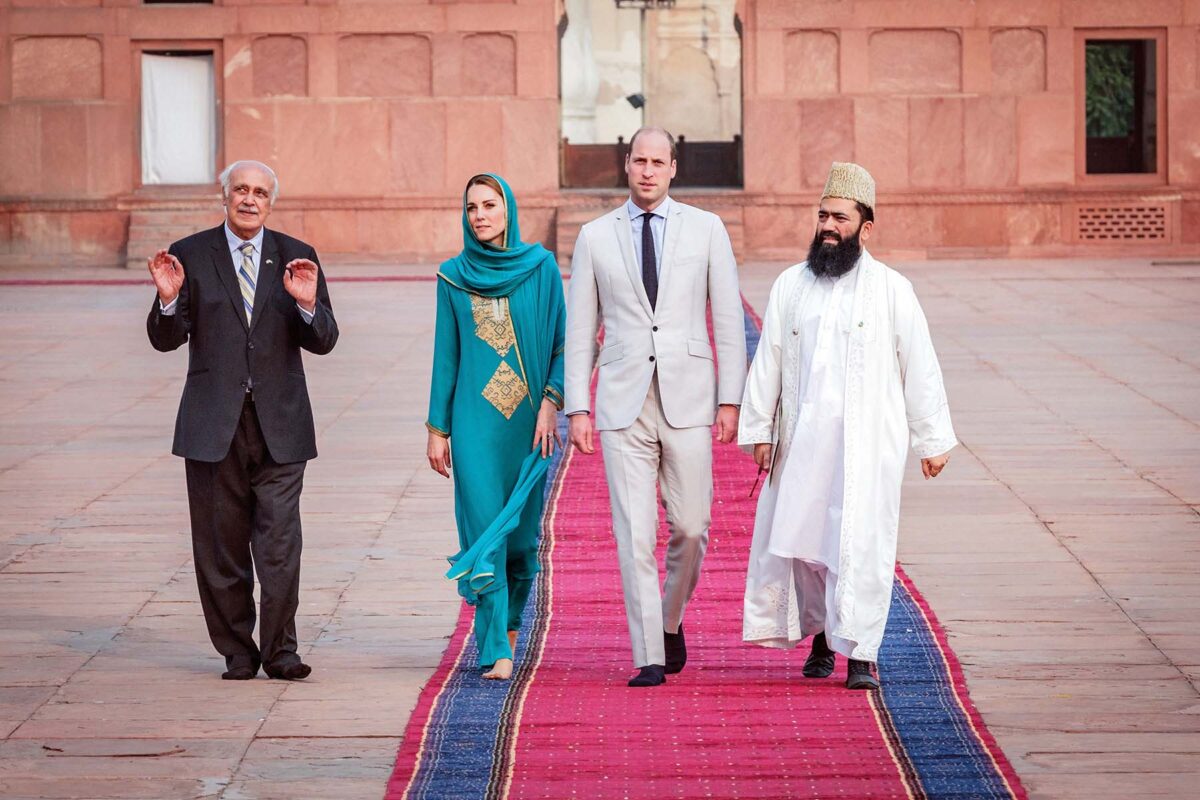
HEALTHCARE
The final call for the royal couple’s day in Lahore was a visit to Shaukat Khanum Memorial Cancer Hospital and Research Centre. The state of the art facility founded by PM Khan in the name of his late mother has an emotional link with the Duke and Duchess of Cambridge as Princess Diana had visited the centre in 1996 and also attended several fund-raising events for it.
The royal couple took time to visit the children’s ward, going from bed to bed, talking to and spending time with the young patients and their families. The Duke and Duchess even attended a toy tea party hosted by 7-year-old Wafia Rehmani, who is suffering from a kidney tumour. The young girl, while wearing matching tiaras with the Duchess, told the royal couple that she wants to be a doctor.
PAKISTAN UK PARTNERSHIP
The royal couple began their last day in Pakistan with a visit to the recently-opened Army Canine Centre in Islamabad, which breeds and trains Arms and Explosive Search Dogs to assist in the discovery of explosive devices. The Duke and Duchess joined UK and Pakistani expert dog handlers as they trained dogs to find explosive materials by scent. The Army Canine Centre is modelled on the UK’s Defence Animal Training Centre and the training witnessed is a part of the UK’s Defence Engagement activity which includes Counter-Improvised Explosive Device capacity building programme.



